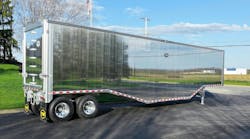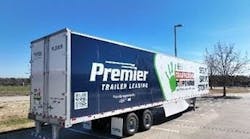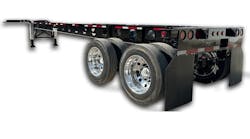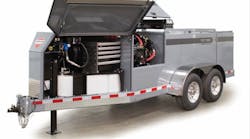BACK in the day, when Mark Martincic had just been promoted to service manager, his company brought in a mentor for him.
He was older than Martincic and remembered the ice man coming to his house. He told Martincic that managing a service department is much like selling ice.
“Every day, you go to the freezer and take out a block of ice and put it up here on the service counter,” he told Martincic. “The size of that block of ice represents how many techs you have times how many hours they’re here. Your job all day long is to break off pieces of that ice and sell it. Whatever is left at the end of the day is melted and gone tomorrow morning but you paid for the whole block of ice.”
Over the years, Martincic has embraced and repeated The Ice Man Analogy.
“If I summed up the service department opportunities I see, they all come back this: How can I sell a bigger portion of that ice?” he said. “How can I keep so much ice from melting? If you have non-productive hours, it’s important to sell more of them.”
Martincic, a professional advisor at KEA Advisors who has over 40 years in service department operations, said service profitability is drained by waste, redundancies, bottlenecks, and non-value added steps.
He gave 10 key focus points:
• The Six-Minute Challenge.
“Identify and fix anything that is unnecessarily keeping the technician out of their bay. The Six-Minute Rule goes like this: At a $65 hourly rate, for every six minutes (one-tenth of an hour), one of your technicians is not in their bay working, it is costing the dealership $6.50 in labor sales and $6.50 in parts sales and over $6.50 in dealership gross profit.”
• Stop negotiating without a hostage.
“Prepare an estimate for every job before beginning the diagnosis, teardown, or repairs. Allow for supplemental estimates. Manage the estimate for every step of the job. Have proactive communications with every customer. Charge for everything you do. Do not charge for anything you don’t do. Always have agreed pricing before repairs are made.”
• Charge for diagnosis and teardown.
“In service, your inventory is technician time. Knowing how much you have each day is critical, but knowing how much of that time is pre-sold from carryovers and appointments is also very important. Knowing how much time you have by skill is also instrumental to technician time and utilization. Typically most shops have a mix of technicians, a small percentage of which are true Master technicians. When you sell diagnoses, and in some cases teardown, you need the experienced technicians’ skills. However, once you determine the repair, the ability to perform the repairs or replace the parts can often be dispatched to a lesser skilled technician.”
• Use consistent SRT times.
“Most dealerships operate without a set of standard repair times (SRT). Typically, someone from within keeps this information in his or her head and shares it as requested. In many dealerships, determining the appropriate SRT for any repair or maintenance is difficult due to lack of real information. Set standard times for repetitive operations. Build a database of these times. Use specific operation codes. Measure performance per operation code.”
• Communicate expected repair times.
“That means consistent SRT times and accurate SRT times documented on the repair order, technician ownership of the time, add operations, technician documentation of the repairs, and accountability and floor management.”
• Implement an effective triage process.
“A suitably skilled technician evaluates and performs the vehicle diagnosis, the ‘triage.’ The goal of the triage process is to provide information regarding the repair to management for proactive communication with the customer regarding the estimated cost, estimated time, and parts availability. Information for the specific technician skill needed regarding the repairs, parts availability, and any pertinent authorizations for the repairs before dispatching.”
• Perform the felt-tip review.
“Inspect what you expect. There should be a daily review of repair orders closed and/or in process, with an accurate estimate, correct SRT time, rate, documentation, add operations, the three C’s, and lag times.
• Organize shop tools and equipment.
“Unorganized, congested, and dirty shops promote inefficient behavior. Technicians spend billable hours searching for benches, trash barrels, and rag barrels. Time is wasted searching for shop equipment. Welders, lifts, electronic testing equipment, and wheel chocks. Studies indicate technicians can spend over five minutes per repair order searching for shop equipment and tools.
“Shop efficiency improvements are important. Shadow boards for shop tools provide easy access to tools and significantly increase the probability tools will be returned to their correct locations. Most frequently used shop equipment and tools placed close to the technicians reduces walking around. Color coding can also be used to indicate the type of tool. Efficiency improvements have been shown to reduce the time spent searching for shop equipment and tools by over 60%, or three minutes per repair order. Customer and employee satisfaction is also greatly improved.
• Organized work flow process.
“Process mapping involves using a diagram to understand the process currently used. Ask the following things: What is expected of us? What should we be doing to provide better customer focus and satisfaction? Where are the bottlenecks and non-value-added items? Identify best practices to incorporate. Find appropriate benchmarks for measuring how to deliver services better.
“Improvements can be made in communication, with upfront estimates that are exported to DMS, integrating triage into the service process, giving a supplemental estimate that is transferred to DMS, keeping the estimate and RO live at all times. There’s the potential of 12,500 hours lost annually.
“What worked when your business was smaller may not work today in terms of procedures for customer authorizations, warranty approval, cost estimates, technical advice, job assignments, and keeping the repair order live. Studies indicate technicians waste over five minutes per repair order. For a shop working 7500 repair orders a year, studies indicate the lost time can be over 625 billable hours per year, or approximately one-third of a technician’s productivity. The dealerships studied averaged approximately 2300 billable hours each year wasted—more than a full man year. Technicians spend over 21 minutes per repair order getting parts. In a typical shop example of 7500 ROs per year, these activities can waste 2600 billable hours per year—another man year. Potential benefits are 29,800 billed hours annually, increased throughput, reduced customer down time, shorter cycle time, and cash-flow improvements.
“Process waste reduction is the result of well-managed processes, quality repairs, and teamwork. The goal is for the vehicle needing repairs, an accurate authorized estimate, and needed parts to arrive in the technician’s bay together. This discussion focused on four of the most typical obstacles in our industry. All improvements gained in these areas not only reduce cycle time, but also dramatically improves a technician’s proficiency.”
• Timely closing of repair orders.
“Shop benefits are efficiency, cash flow, customer retention and satisfaction, and increased throughput. Why don’t repairs get closed in a timely manner?”
He said that with work in process, labor is purchased from technicians and sold by the service department based on hourly or flat rate by one-tenths of an hour. Labor sold is credited from work in process on the balance sheet and debited to cost of sales. Labor is purchased at cost and sold at retail.
“Labor purchased from technicians stays in the work in process inventory until sold,” he said. “There, work in process on the balance sheet should equal the amount of technicians’ labor purchased at cost but not yet sold on repair orders. Labor not sold equals the value of labor flagged on unfinished repairs and completed repair orders that have not yet been closed.”
What is the financial impact?
He said repair orders open more than six days can cut both labor and parts margins by up to five percentage points. Repair orders open up to 30 days can cut both labor and parts margins by up to eight percentage points. Repair orders open up to 60 days could cut labor margins by 35% and parts margins by up to 65%.
He stressed measuring everything you do, citing a quote from British scientist Lord Kelvin: “You cannot improve what you cannot or do not measure.”
He also stressed measuring what matters, citing a quote from American religious leader and author Thomas S Munson: “When we deal in generalities, we will seldom succeed; when we deal in specifics, we will seldom fail. When performance is measured, performance improves; when performance is measured and reported, the rate of improvement accelerates.” ♦










